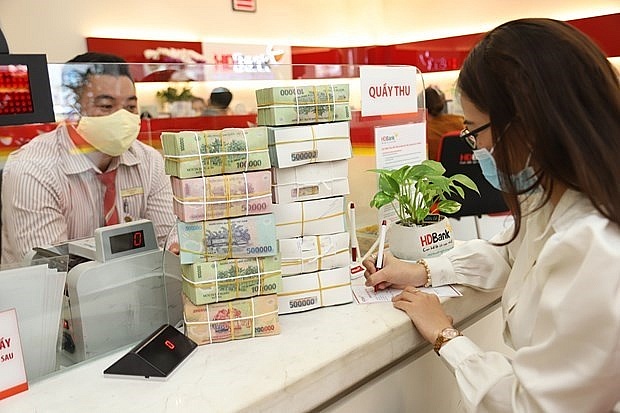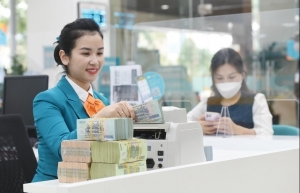Bad debts continue to soar at commercial banks
 |
Deputy governor of the State Bank of Vietnam (SBV) Dao Minh Tu has said that bad debts are climbing for both credit organisations and the wider economy.
"It is an ongoing challenge to manage bad debts and banking activities will be seriously affected over the next few years," said Tu.
He said that the woes would be revealed more clearly as the ratio of on-balance-sheet bad debt continues to grow due to inflation and interest rate rises. At the end of 2022, bad debts were classified based on the groups of borrowers and economic issues like recovery and inflation curbing.
Can Van Luc, a member of the National Monetary and Financial Policy Advisory Council, said that on-balance-sheet bad debt could reach 2.3-2.5 per cent and gross bad debt could hit 6 per cent in 2023, rising into 2024. As the regulations on unchanged debt groups in Circular No.14/2021/TT-NHNN expire, economic recovery could suffer.
According to the SBV, at the end of 2022, the ratio of on-balance-sheet bad debt was 1.92 per cent. However, numerous banks have just released their business results for the last quarter and 2022 as a whole, showing that bad debts are increasing.
At NCB (National Citizen Commercial Joint Stock Bank), total outstanding loans to customers rose by 14.6 per cent compared to early 2022 because the bank classified bad and overdue debts.
Despite high profits, VPBank reported high bad debts (including FE Credit) at 4.73 per cent. While that of the parent bank was only 2.19 per cent, debts in group 4 (suspected) and group 5 (able to lose) both rose on-year.
Bad debts will increase in 2023 with the real estate market facing issues as the industry debts make up 30 per cent of total borrowing at most banks. Moreover, the collateral for the loans is usually real estate, which is either frozen, reduced in price, or less liquid. In addition, factories and machinery are harder for banks to liquidate to recover capital.
The size of bad debts and the cost of credit at various banks will be different based on how the bank set aside provisions and the financial resilience of borrowers. According to securities company VNDirect, the big problem is that businesses are struggling with liquidity, especially small- and medium-sized enterprises. High-interest rates will affect debt repay capacity and affect the bank's asset quality in 2023.
 | Commercial banks asked to lend more for production and business The State Bank of Vietnam (SBV) requires credit institutions with room to actively disburse loans for production and business, especially in priority areas. |
 | The short-term implications of SBV credit room lift Lifting the credit room may be a temporary solution. Tran Thi Khanh Hien, director of VNDirect's Analysis Division, talked to VIR's Hong Dung about the central bank's move on credit. |
What the stars mean:
★ Poor ★ ★ Promising ★★★ Good ★★★★ Very good ★★★★★ Exceptional
Related Contents
Latest News
More News
- Tax sector wraps up 2025 and sets priorities for next year (December 25, 2025 | 14:00)
- A tipping point for digital and hybrid wealth management in Vietnam (December 23, 2025 | 13:33)
- $250 million deal targets women-owned SMEs, sustainable agriculture (December 22, 2025 | 17:40)
- Stock market posts resilient 2025 performance (December 19, 2025 | 18:17)
- Citi Vietnam receives 2025 AmCham CSR recognition (December 19, 2025 | 16:35)
- As global green supply chain reshapes, will Vietnam be left behind? (December 19, 2025 | 08:00)
- Banks gear up for massive capital increases (December 18, 2025 | 17:04)
- Securing capital and efficiency for Vietnam’s 2026-2030 growth ambitions (December 17, 2025 | 10:00)
- Energy sector in need of blended finance mechanisms (December 17, 2025 | 09:00)
- Vietnam still has room to mobilise capital for sustainable growth (December 17, 2025 | 08:57)

 Tag:
Tag:


























 Mobile Version
Mobile Version